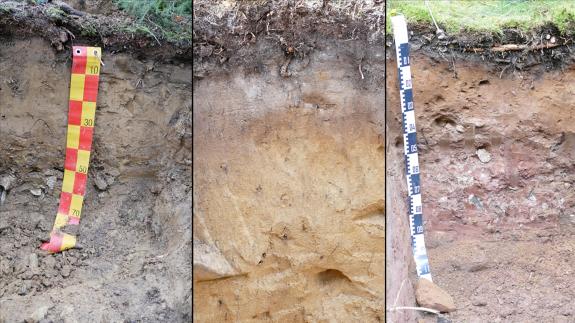The top 10 cm of topsoil enriched with humus can absorb and store up to 50 l of rainwater per square meter in a short period of time. Forests can therefore mitigate extreme precipitation events and thus make an important contribution to flood protection. The filtered and stored water from the forest accounts for around 70 % of the drinking water produced nationwide.
Soils form the basis for our lives. They are formed at the interface of the lithosphere (rock), hydrosphere (water), biosphere (flora and fauna) and atmosphere (air) as a natural structure from rocks in the uppermost layer of the earth's crust. We live on them and we live from them. Soils take time to develop, and it takes between 100 and 400 years for one centimeter of topsoil to form. They are an indispensable part of ecosystems and provide a habitat for plants and animals. They act as filters, buffers and regulators in the water and material cycle and are of central importance for agriculture and forestry and for the extraction of water, production and raw materials. For thousands of years, humans have been using - even overusing - the soil, which has lost some or all of its functions and is only slowly recovering. Soil is therefore a finite resource that is crucial for life on earth.
During the Long Night of Science, visitors will learn how soil acts as a water filter. On soil columns of different origins, e.g. loess, limestone and red sandstone, which are typical for the region, we will place nitrogen (nitrate)-loaded or "acidic" (low pH value) or particle-contaminated water and allow it to seep through. In the seepage water, we will measure typical soil water parameters such as nitrate concentration, solution pH or turbidity. In this way, you can directly experience how soils act as filters for water.

